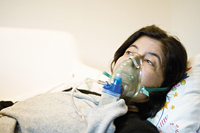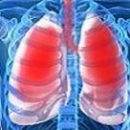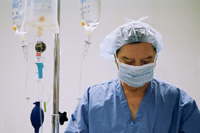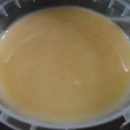The swelling of the lungs is a formidable state, because, in the literal sense, threatens the life of a sick person. Where in our lungs, liquid is taken, how to recognize swelling on time? The most important thing about it is in our article.
Content
 Elevation of the lungs are usually caused by deficiency of the left ventricle, the main chamber of the heart, resulting from the disease of the heart. With certain heart diseases for filling the left ventricle, a greater pressure is required to ensure a sufficient blood flow to all parts of the body. Accordingly, the pressure in other chambers of the heart and in the pulmonary veins and capillaries increases. Gradually, part of the blood heats up in space between the tissues of the lung. This prevents the lungs and violates the gas exchange.
Elevation of the lungs are usually caused by deficiency of the left ventricle, the main chamber of the heart, resulting from the disease of the heart. With certain heart diseases for filling the left ventricle, a greater pressure is required to ensure a sufficient blood flow to all parts of the body. Accordingly, the pressure in other chambers of the heart and in the pulmonary veins and capillaries increases. Gradually, part of the blood heats up in space between the tissues of the lung. This prevents the lungs and violates the gas exchange.
In addition to heart disease, there are other factors predisposing to a lung edema:
- excess blood in veins;
- Some kidney diseases, extensive burns, patient liver, nutrient failure;
- Violation of the outflow of lymphs from the lungs, as is observed in Hodgkin's disease;
- Reducing blood flow from the left upper heart chamber (for example, with a mitral valve narrowing);
- Violations that cause blockage of pulmonary veins.
- dyspnea;
- Sudden attacks of respiratory distress (bouts of respiratory failure) after several hours of sleep;
- difficult breathing, which is facilitated in a sitting position;
- cough.
It should also alert - rapid pulse, rapid breathing, abnormal sounds when listening, swelling the cervical veins and deviations from normal heart tones.
With a strong edema of the lungs, when alveolar bags and small respiratory tract are filled with liquid, the patient's condition deteriorates. Breathing is expensive, becomes difficult, the cough is distinguished by a foamy wet with blood traces. The pulse is studied, heart rhythms are disturbed, the skin becomes cold, sticky and acquires a bluish tint, sweating increases. Since the heart pumps less and less blood, blood pressure drops, the pulse becomes a filamentous.
Radiological studies of the chest usually identify diffuse darkening in the lungs and often hypertrophy of the heart and excess fluid in the lungs.
In some cases, diagnostic purposes use the catheterization of a pulmonary artery, which allows you to confirm the lack of left ventricle and exclude adult respiratory distress syndrome, whose symptoms are similar to the symptoms of the pulmonary edema.
As a rule, the patient is allowed to breathe mixtures with a high oxygen content. If an acceptable level of oxygen content is not supported, to improve the supply of oxygen tissues and the restoration of the acid-base balance, artificial ventilation of the lungs are used.
The patient can also assign diuretics (for example, Laziks) to remove fluid with urine, which in turn helps to reduce the amount of extravascular fluid.
For the treatment of heart dysfunction in a number of cases, glycosides are prescribed aphidish and other means, expanding arteries (for example, nipride). To remove the alarming state, facilitate breathing and improving blood circulation can be used morphine.









